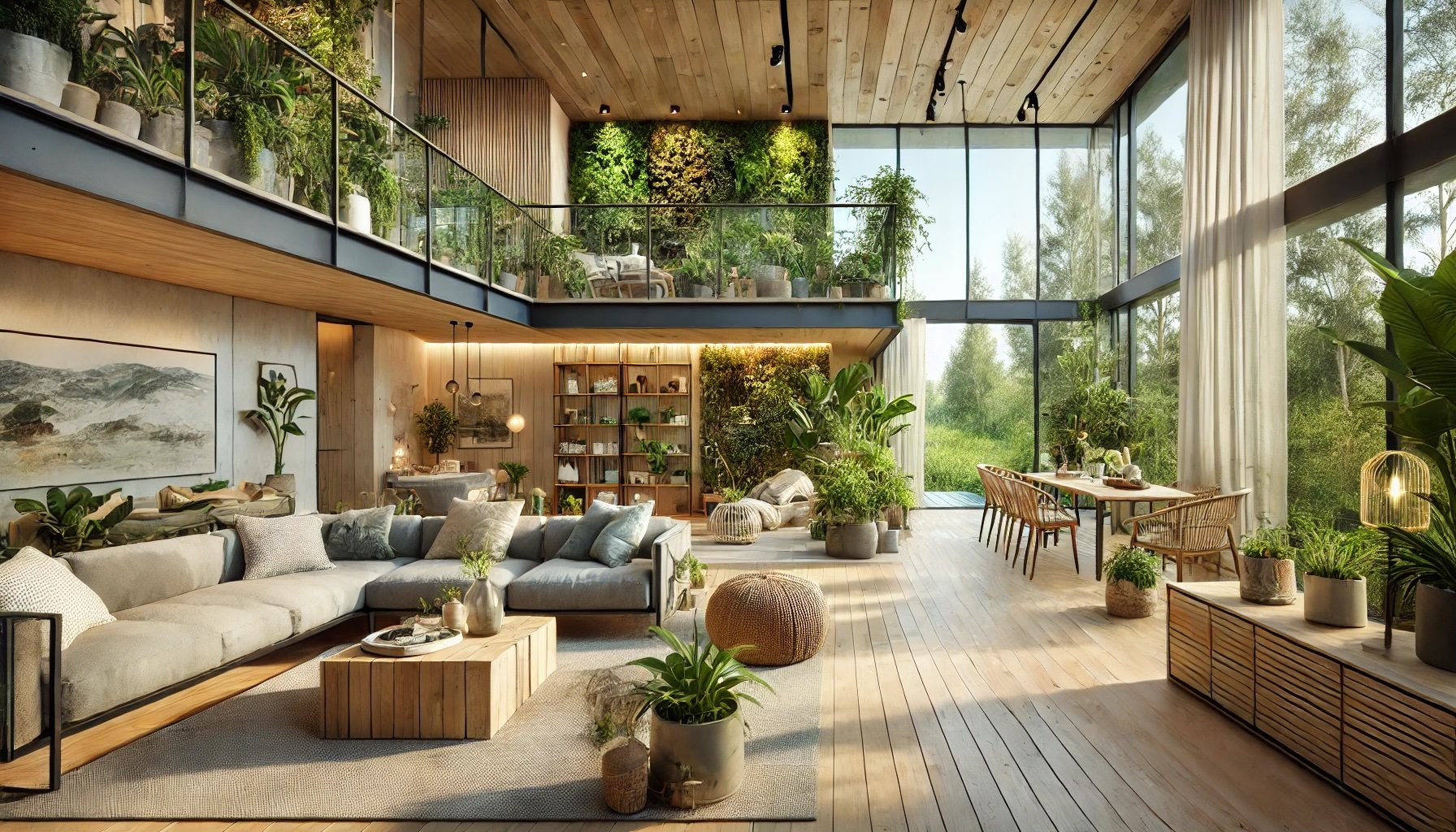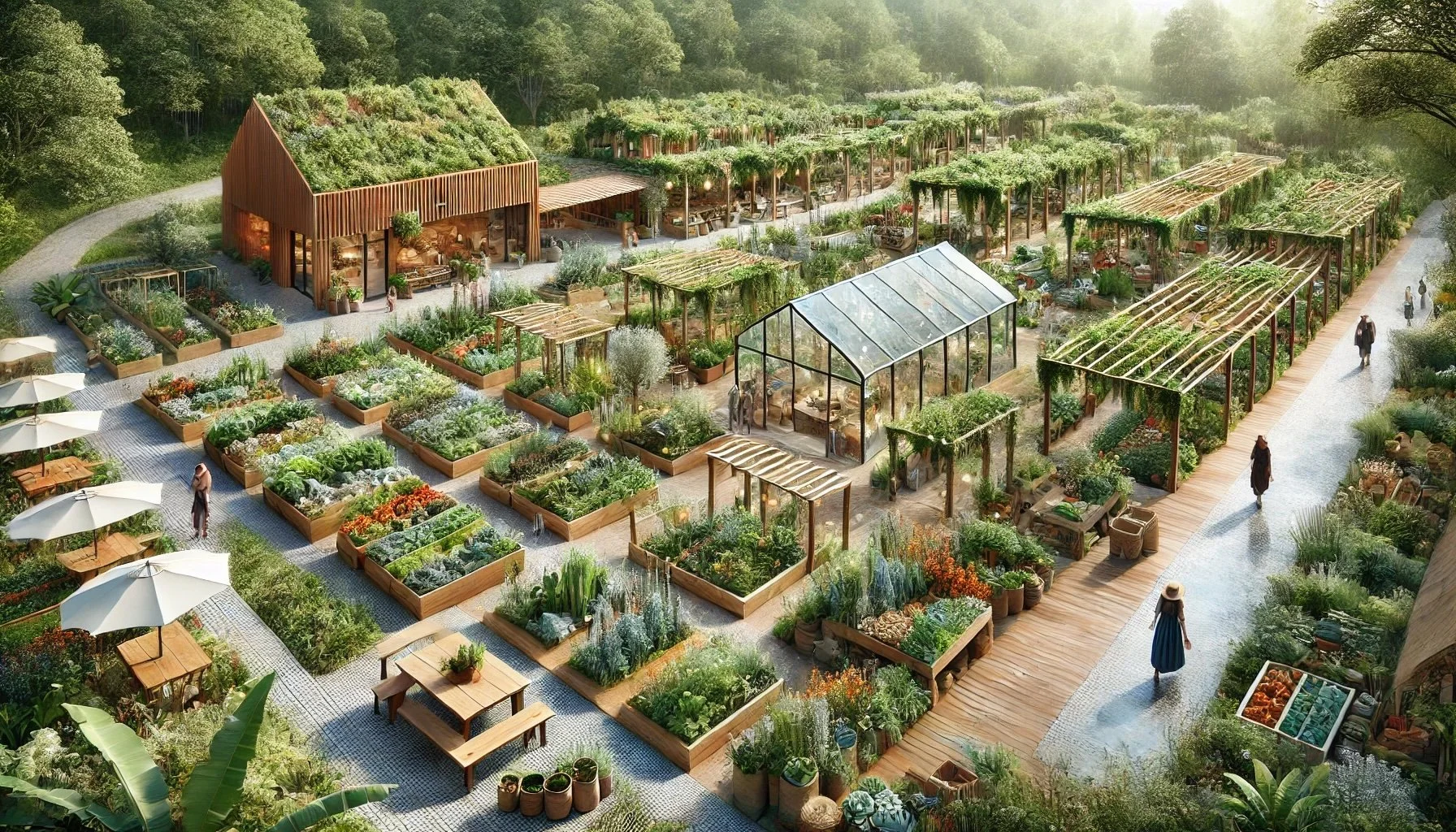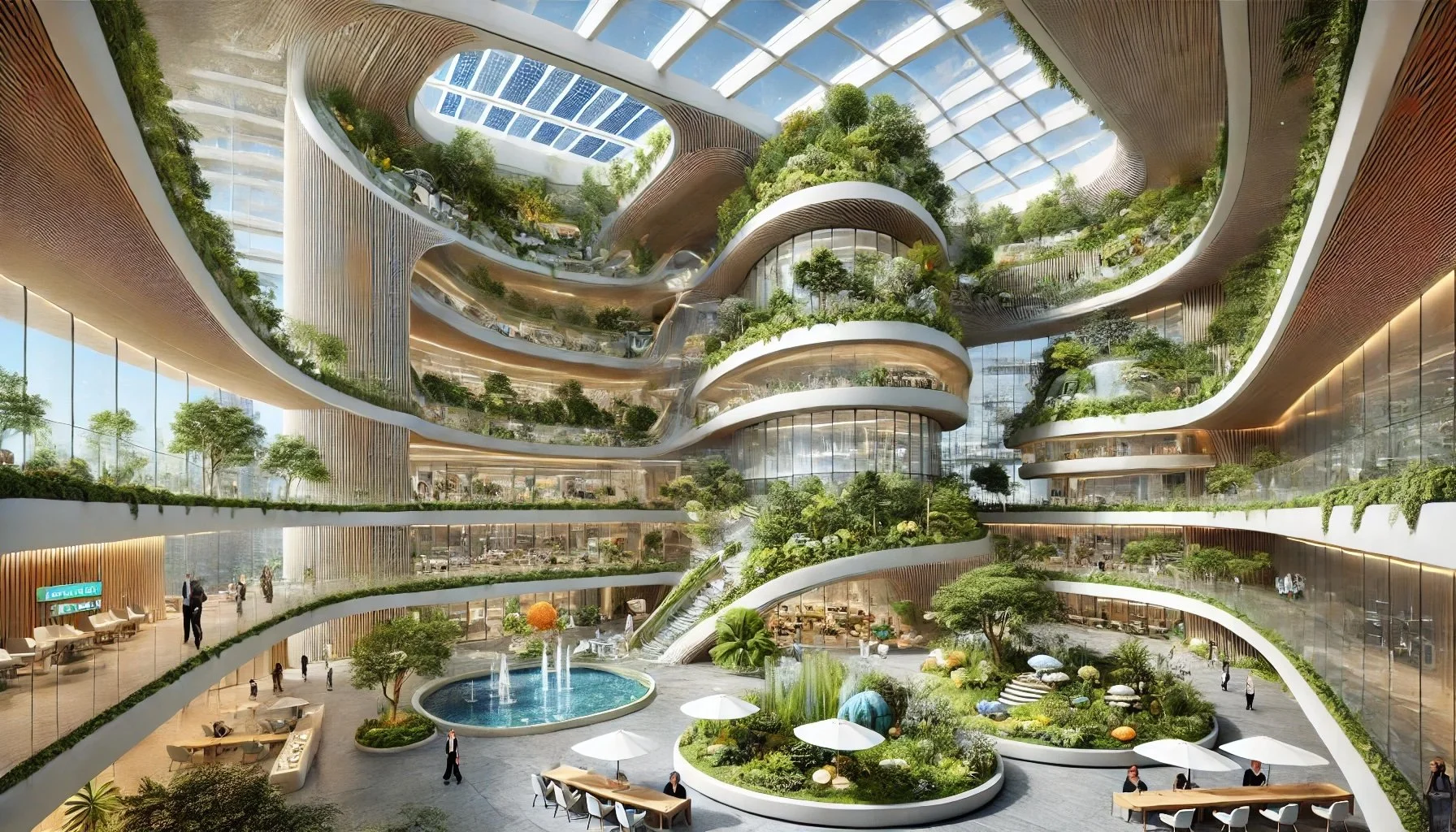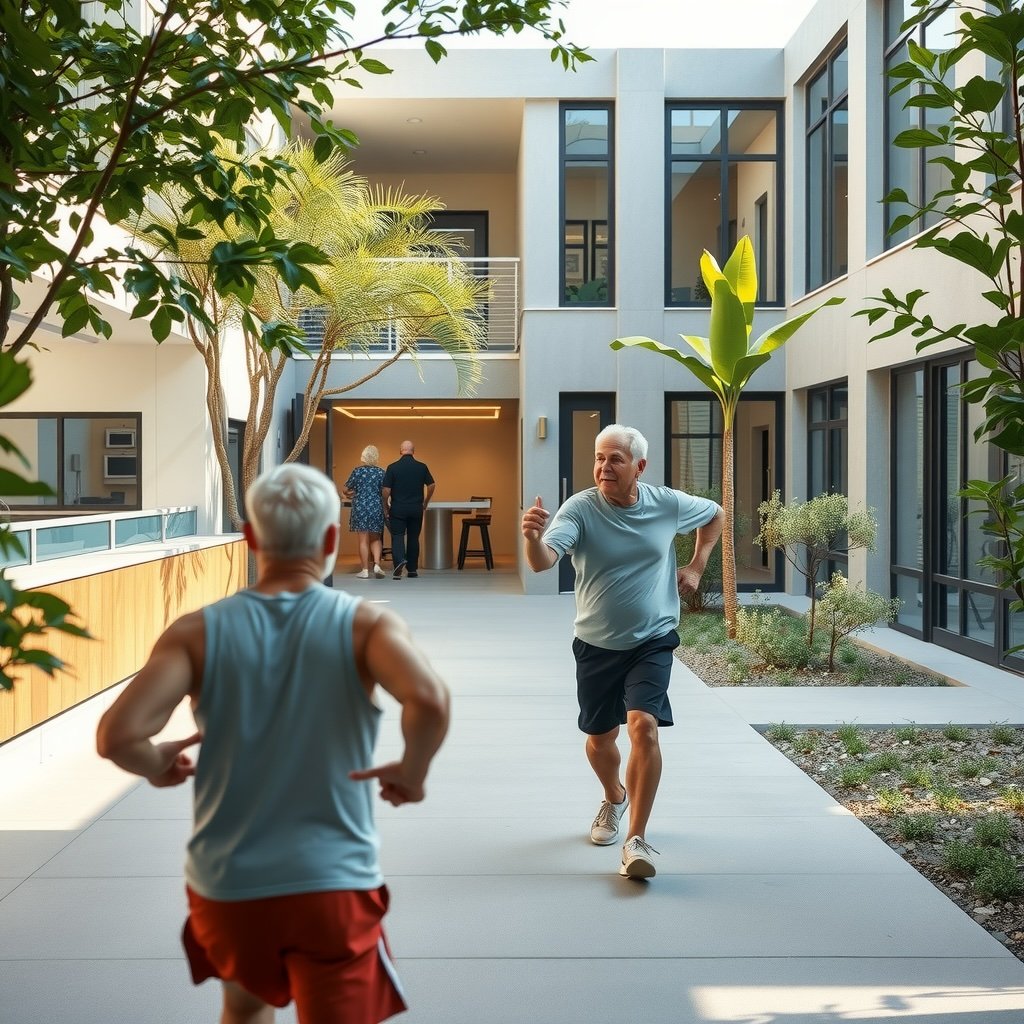
Designing WELL Course
Breathe Life into Your Space: A Sanctuary of Wellness and Tranquility
Imagine walking into a room that instantly makes you feel calm, refreshed, and deeply connected—a space that doesn’t just look beautiful but nurtures your soul. That’s the power of Biophilic & Wellness Interior Design.
This course is more than just decorating—it’s about transforming the way you live. You’ll learn how to infuse your spaces with natural elements, soothing textures, and intentional design choices that promote peace, happiness, and well-being. Whether it’s a cozy home retreat or a workspace that fuels creativity, you’ll discover how to design with heart and purpose.
Your environment shapes your emotions, your energy, and your life. Let’s create a space that truly loves you back.
Ready to begin? Let’s embark on this transformative journey together!
$299
$199 Early Bird Registration
Offer valid until May 1, 2025
Elevate Your Space: The Art of Biophilic & Wellness Interior Design
Welcome to the Course!
Congratulations on taking the first step toward creating healthier, more restorative living and working spaces! This course is designed to introduce you to the principles of biophilic and wellness interior design, providing you with the knowledge and practical tools to design spaces that nurture both physical and emotional well-being.
Our environments deeply influence our health, mood, and overall quality of life. By incorporating nature-inspired elements, sustainable materials, and wellness-focused practices, you can craft interiors that enhance relaxation, focus, and vitality.
What You’ll Learn
✔️ The core principles of biophilic design and why they matter
✔️ How to integrate natural elements into your home and workspace
✔️ The impact of lighting, air quality, and materials on well-being
✔️ Practical steps to create a sanctuary that supports mental and physical health
✔️ Case studies and real-world examples of wellness-inspired interiors
How to Use This Course
Each module explores a different aspect of biophilic and wellness design, complete with:
✔️ Key concepts to deepen your understanding
✔️ Real-world examples to inspire your projects
✔️ Hands-on activities to apply your learning
✔️ Reflection exercises to personalize your journey
Use the course guide to take notes, document insights, and complete practical exercises. By the end of this course, you’ll have the confidence and expertise to design a space that aligns with nature, supports your well-being, and reflects your values.
Bonus Offers Included:
✔️ Lifetime access to course materials
✔️ Bonus ebook and guest speakers
✔️ 1:1 Consultation
✔️ Facebook Community for networking
COURSE
-
Designing WELL
-
Chapter 1: Biophilia & Wellness Interior Design
-
Chapter 1 - Overview - Biophilia & Wellness Interior Design
This first chapter introduces the core principles of biophilic design and wellness-focused interiors. We’ll explore how nature-integrated spaces can enhance well-being, discuss key environmental and psychological factors, and review real-world case studies. By the end of this session, participants will have a foundational understanding of biophilic design and assess their own spaces for wellness potential.
-
Chapter 1 - Module 1 - Understanding Biophilic Design and Its Impact on Wellness
1. Definition & Origins
2. How Biophilic Design Affects Wellness
-
Chapter 1 - Module 2 - The Connection Between Interior Spaces & Well-Being
1. How indoor environments shape our mental and physical health
2. The importance of sensory experiences:
3. The role of greenery, natural elements, and biophilic interventions
4. Scientific studies on biophilic spaces improving well-being
-
Chapter 1 - Module 3 - Fundamentals of Wellness Interior Design
1. Key Wellness Design Elements:
2. Common Mistakes in Interior Design That Affect Well-Being
-
Chapter 1 - Module 4 - The Six Biophilic Design Principles
Environmental Features:
Natural Shapes & Forms:
Natural Patterns & Processes:
Light & Space:
Place-Based Relationships:
Evolved Human-Nature Relationships:
-
Chapter 1 - Module 5 - Case Studies & Real-World Examples
Residential Spaces:
Workspaces:
Healthcare Environments:
Hospitality & Retail:
-
Chapter 1 - Module 6 - Interactive Activity & Reflection
Self-Assessment Activity:
Reflection Exercise:
Next Steps & Homework:
-
-
Chapter 2: Growing Wellness – Indoor & Community Gardens for a Healthier Life
-
Chapter 2 - Overview - Growing Wellness
This second chapter explores how indoor and community gardens contribute to personal and social well-being. Participants will learn the benefits of green spaces, how to create sustainable gardens, and practical ways to integrate greenery into their lives.
-
Chapter 2 - Module 1 - Why Gardens Matter for Wellness and Sustainability
Welcome & Introductions
Overview of the Module
Why Gardens Matter for Wellness and Sustainability
-
Chapter 2 - Module 2 - The Power of Plants – Indoor Gardens & Well-Being
Benefits of Indoor Plants on Air Quality, Mood, and Productivity
Creating Low-Maintenance Indoor Gardens
Interactive Activity: Choosing the Right Plants for Your Space
-
Chapter 2 - Module 3 - Community Gardens & Social Wellness
How Community Gardens Improve Neighbourhoods & Social Connections
Food Security & Sustainability Benefits
Steps to Start or Join a Community Garden
Interactive: Visioning Exercise – Designing a Thriving Community Garden
-
Chapter 2 - Module 4 - Wellness by Design – Integrating Greenery Indoors
Biophilic Design Principles for Homes & Workplaces
Creating Restorative Spaces with Plants
Using Vertical Gardens, Living Walls, & Natural Elements in Design
Case Studies of Successful Wellness-Centered Interiors
-
Chapter 2 - Module 5 - Therapeutic Benefits of Gardening
Gardening as a Mindfulness Practice
Horticultural Therapy & Its Effects on Mental Health
Hands-on Activity: Planting a Personal Wellness Herb or Flower Pot
-
Chapter 2 - Module 6 - Practical Gardening Tips & Sustainable Practices
How to Care for Indoor Plants
DIY Composting & Natural Fertilizers
Maximizing Small Urban Spaces for Gardening
Interactive: Q&A & Troubleshooting Plant Care Issues
-
Chapter 2 - Module 7 - Interactive Activity & Reflection
Green Space Observation & Analysis
Create a Mini Indoor Garden
Community Garden Planning Exercise
Reflection Prompts
Personal Connection to Green Spaces
Social Benefits of Community Gardens
Sustainability & Accessibility
Vision for the Future
-
-
Chapter 3: Sustainable Materials, Eco-Friendly Practices & Non-Toxic Living
-
Chapter 3 - Overview - Sustainable Materials, Eco Friendly Practices & Non Toxic Living
This third chapter explores how to create healthier, more sustainable interiors by choosing eco-friendly materials, reducing toxins, and implementing mindful consumption habits. Participants will gain insights into sustainable sourcing, low-impact design choices, and practical strategies for reducing waste.
-
Chapter 3 - Module 1 - Understanding Sustainable Materials
What Makes a Material Sustainable?
Certifications to Look For
-
Chapter 3 - Module 2 - Eco-Friendly Material Alternatives
Eco-Friendly Material Alternatives
How to Assess Material Impact
-
Chapter 3 - Module 3 - Non-Toxic Living & Improving Indoor Air Quality
Understanding VOCs (Volatile Organic Compounds)
Safer Alternatives for Walls & Finishes
-
Chapter 3 - Module 4 - The Role of Textiles in Sustainable Design
Eco-Friendly Textile Choices
Synthetic Fibres vs. Natural Fibres
-
Chapter 3 - Module 5 - Reducing Waste & Mindful Consumption
Sustainable Lifestyle Practices
Practical Strategies for a Zero-Waste Home
-
Chapter 3 - Module 6 - Interactive Activity & Reflection
Sustainability Audit
DIY Project
Reflection Exercise
Next Steps & Homework
-
-
Chapter 4 - Nature-Inspired Interior Design & Sensory Wellness
-
Chapter 4 - Overview
This fourth chapter explores how to design interiors that evoke the tranquility and balance of nature. By understanding the psychology of colours, textures, and multi-sensory design, participants will learn how to create deeply restorative spaces that support well-being.
-
Chapter 4 - Module 1 - The Psychology of Colours in Nature
How Colours Influence Mood & Well-Being:
Applying Nature-Inspired Color Palettes in Interiors:
-
Chapter 4 - Module 2 - Natural Textures & Patterns for Tranquility
The Impact of Tactile Elements on Well-Being
Biophilic Patterns & Visual Connections to Nature
-
Chapter 4 - Module 3 - Creating Multi-Sensory Experiences in Your Space
Engaging All the Senses for a Holistic Environment
Optimizing Airflow & Ventilation for Wellness
-
Chapter 4 - Module 4 - Incorporating Natural Elements in Interior Design
Bringing the Outdoors In
Choosing Sustainable & Organic Materials
-
Chapter 4 - Module 5 - Biophilic Lighting Design
Maximizing Natural Light in Your Space
Circadian Lighting & Full-Spectrum Bulbs
-
Chapter 4 - Module 6 - Interactive Activity & Reflection
Mood Board Creation
DIY Project
Reflection Exercise
Next Steps & Homework
-
-
Chapter 5 - Mental Health, Biophilia & Wellness Interiors
-
Chapter 5 - Overview - Mental Health, Biophilia & Wellness Interiors
This fifth chapter we focus on the profound connection between nature, interior design, and mental well-being. Participants will explore how biophilic design elements contribute to emotional balance, stress reduction, and overall wellness.
-
Chapter 5 - Module 1 - The Mental Health Benefits of Nature Exposure
How Nature Reduces Stress, Anxiety, and Depression
Design Strategies to Enhance Nature’s Influence
-
Chapter 5 - Module 2 - Designing Calming Environments for Relaxation & Mindfulness
Key Design Elements for a Tranquil Space
The Role of Soundscapes & Natural Acoustics:
Creating Restorative Sleep Environments
-
Chapter 5 - Module 3 - The Impact of Lighting & Circadian Rhythms on Mental Health
Understanding Biophilic Lighting & Well-Being
Circadian Lighting Strategies for Better Sleep & Productivity
-
Chapter 5 - Module 4 - The Science of Decluttering & Organization for Mental Clarity
Why Clutter Contributes to Stress & Anxiety
Mindful Decluttering & Intentional Design Choices
-
Chapter 5 - Module 5 - Creating Restorative Spaces for Self-Care & Stress Relief
What Makes a Space Restorative?
Ideas for Meditation & Self-Care Corners
Integrating water elements for tranquility
-
Chapter 5 - Module 6 - Interactive Activity & Reflection
Mindful Space Setup
Guided Meditation
Reflection Exercise
Next Steps & Homework
-
-
Chapter 6 - Designing a Healthier Home for the Future
-
Chapter 6 - Overview - Designing a Healthier Home for the Future
This sixth chapter we explore how to future-proof our homes for long-term well-being by integrating biophilic design, smart technology, and sustainable practices. Participants will develop a personalized plan to create a healthier living environment that evolves with their needs.
-
Chapter 6 - Module 1 - The Future of Biophilic Architecture & Wellness Design
Emerging Trends in Biophilic & Sustainable Design
Long-Term Benefits of Biophilic Interiors
-
Chapter 6 - Module 2 - Maintaining a Nature-Inspired & Toxin-Free Home
Creating a Holistic Wellness Routine for Your Space
Reducing Toxicity & Chemical Exposure
-
Chapter 6 - Module 3 - Smart Home Technology & Wellness
Enhancing Indoor Environments with Technology
The Intersection of Nature & Technology
-
Chapter 6 - Module 4 - Multi-Sensory Spaces for Emotional & Physical Well-Being
Engaging All the Senses in Design
Creating Adaptive Spaces for Evolving Needs
-
Chapter 6 - Module 5 - Community & Shared Green Spaces for Mental Health
The Power of Green Spaces in Urban & Residential Areas
Building a Healthier Future Together
-
Chapter 6 - Module 6 - Interactive Activity & Reflection
Personal Biophilic & Wellness Design Plan
Vision Statement
Reflection Exercise
Next Steps & Closing
-
-
Closing

Start your journey to Living WELL by Design
Benefits of Living WELL by Design
-
By using eco-friendly products, consumers can help reduce their impact on the environment. Eco-friendly products are typically made from sustainable materials, use less energy in production, and generate less waste.
-
While eco-friendly products may have a higher upfront cost than conventional products, they can save consumers money in the long run. Energy efficient strategies can be integrated while making other necessary capital repairs. For new construction, building with energy efficiency in mind now will reduce the need to upgrade later.
-
Eco-friendly products can also have health benefits. Many conventional household products contain harsh chemicals that can be harmful to humans and the environment. Eco-friendly materials, on the other hand, are made from natural and non-toxic ingredients.
Andrea Leja
Facilitator | Biophilic & Sustainable Design Advocate
“I was created to create. I was created to inspire. I was created to better the life of our inevitable future.”
As a designer, educator, and advocate for sustainable living, I believe that every interior tells a story—one that reflects its users, nurtures well-being, and honors the environment. My mission is to craft spaces that are both beautiful and functional while deeply respecting and protecting the natural world.
Sustainability and design are not separate concepts; they are intrinsically linked. Through my work, I strive to meet the needs of today without compromising the future, ensuring that every space fosters a harmonious relationship between people and nature. By embracing biophilic and regenerative design principles, I empower individuals and businesses to create environments that enhance health, inspire creativity, and leave a lasting positive impact.
In this course, I bring my passion, expertise, and commitment to helping you transform your approach to design. Together, we will explore how interiors can serve as catalysts for wellness, sustainability, and meaningful connection—because there is no true beauty in design if it comes at the cost of our planet.
Meet your Facilitator

“Our biggest challenge in this new century is to take an idea that seems abstract – sustainable development – and turn it into a reality for all the world’s people”




